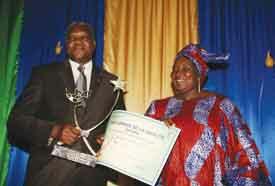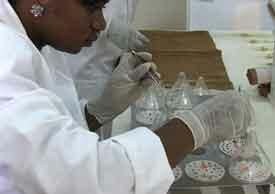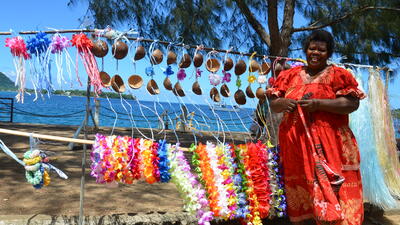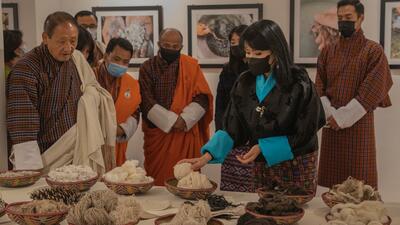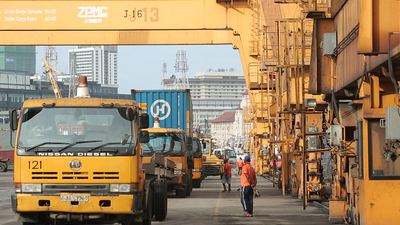West Africa Quality Programme: A regional approach to competitiveness
Over the past five years, it has covered all 15 Economic Community of West African States (ECOWAS) and Mauritania. International Trade Forum talked to UNIDO's WAQP programme manager, Bernardo Calzadilla-Sarmiento, about why the West African Economic and Monetary Union (WAEMU) and ECOWAS sought UNIDO's support, and the extent to which WAQP is tackling non-tariff barriers and improving West Africa's business environment. The discussion also reviewed how a capacity-building programme such as WAQP can improve competitiveness and overcome technical and sanitary barriers to trade.
TF: What was UNIDO's initial role in WAQP?
Calzadilla: UNIDO's involvement in West Africa's quest for quality stems from the Common Industrial Policy (CIP) adopted by WAEMU at the end of 1999. The policy focussed on improving competitiveness, harmonizing standards and improving intraregional trade. It recommended development of quality infrastructure in West Africa so exporters could comply with World Trade Organization agreements on technical barriers to trade and sanitary and phytosanitary measures. In turn, this would allow them to access international markets.
A quality infrastructure analysis undertaken by WAEMU at the beginning of the programme revealed that none of the countries, all of which are least developed countries (LDCs) with the exception of Côte d'Ivoire, had accreditation bodies. Some did not have a formal structure to support a standards system. Only one testing laboratory complied with international standards and health and safety regulations. Most companies did not follow any production or management standards and only 23 were certified to ISO 9001 quality management standards. There was no regional harmonization of standards and in six countries standards bodies were unable to provide local industries with international standards.
UNIDO first looked at what could be done at the regional level to optimize quality infrastructure and deliver economies of scale to regional institutions. One of the problems faced by small countries, particularly LDCs, is that while they can be assisted individually with the development of national quality infrastructure, they may not have the resources to maintain it. The rationale behind building regional quality infrastructure was that a focus on selected institutions would be both more efficient at the regional level and more sustainable. To achieve this WAQP incorporated the subsidiarity principle, ensuring that nothing would be done at the regional level that was better done at the national level, or at the level of the private sector or the consumer level.
On this basis, the UNIDO programme promoted a regional approach to metrology and accreditation. It also suggested other activities, such as standardization, in which national stakeholders need to be involved, and which should be a focus at the national level. The development of an understanding of the need for quality was undertaken by the private sector and consumers. WAQP took care to ensure the private sector had a role in developing quality infrastructure and that bridges were built between the public and private sectors. For example, many public sector laboratories did not have good links with the private sector because they were not commercially minded and took too long to carry out tests that were not always accurate. Bridge building has helped these laboratories develop a private sector mentality and respond better to demand.
Essentially, these are the three elements that have been central to the success of WAQP: a focus at the regional level to ensure economies of scale and therefore sustainability; the subsidiarity principle to ensure a balance between work at the regional and national levels; and bridge building between the public and private sectors.
TF: What were the early outcomes of the programme?
Calzadilla: At the end of phase one, WAEMU had a Regional Coordination Committee on Quality and three permanent regional structures, namely the West African Accreditation System, the Regional Secretariat of Standardisation, Certification and Quality Promotion, and the West African Secretariat for Metrology. These regional structures were the first of their kind in the world. In terms of numbers, 24 testing laboratories in WAEMU were assisted towards accreditation and 46 laboratories across the region received and commissioned equipment that improved their testing capacities. Enterprise certification increased by 40% and an additional 72 enterprises were assisted towards certification.
In addition to capacity building outcomes, there were two practical sectoral outcomes, one at the national level, the other at the regional level. In July 2003, a self-imposed ban was placed on the export of shrimp from Benin to the EU. In August 2004, EU representatives in Benin requested that the ban be reviewed and this was done by an EU mission that arrived in Benin towards the end of the year. In February 2005, the government of Benin lifted the ban as WAQP had improved the quality of exports by assisting companies and inspectors to introduce the Hazard Analysis & Critical Control Points management system that addresses food safety, upgraded three relevant laboratories and strengthened the competent authority.
In the cotton sector WAQP developed a standard for western and central Africa. During the first phase of WAQP, most WAEMU cotton was tested manually against two or three parameters, although state-of-the-art testing included seven parameters. By the end of the first phase, a cotton standard had been put in place that enabled cotton producers to market five different classes of cotton graded according to colour, length and presence of foreign material. Previously they could offer only one class.
TF: How did phase two of WAQP develop?
Calzadilla: The positive achievements of the first phase of WAQP in WAEMU led the European Commission to provide additional funding of € 16.5 million so that the programme could be extended to cover all 15 ECOWAS members and Mauritania. The implementation of phase two started in September 2007 and will end on 31 December 2012. It has opened up new challenges as it has included Mauritania and seven ECOWAS countries that had not been part of phase one in the WAEMU region. As well as dealing with established regional structures and three languages, phase two had to close the gap between the foundations of quality infrastructure in the additional countries and the improved quality infrastructure in the WAEMU countries.
By the time phase two started, demand for conformity assessment services, particularly laboratory accreditation, had increased in response to an increasing rate of rejection of exports brought about by export growth and increasingly stringent scrutiny. To resolve the problem, the second phase of WAQP has focussed on laboratory accreditation. Some 30 testing laboratories have carried out mock assessments for accreditation and, so far, seven have been accredited by internationally recognized accreditors. An equally important achievement is the strengthening of metrology services in the ECOWAS countries and Mauritania.
TF: What benefits has the programme delivered?
Calzadilla: The improvement in company and consumer quality consciousness in ECOWAS and Mauritania as a result of WAQP has been significant. More laboratories want to go for accreditation, 25 companies have been upgraded to apply for ISO 9001 and ISO 22000 certification, and more would like to be part of the programme. Quality consciousness at the government level has also improved, with a number of countries requesting support for a national quality policy. Another encouraging outcome of the second phase is that a number of countries have started to develop what we call National Legs. In addition to regional activities, these countries have developed large, national quality technical assistance programmes with other partners, an indicator that quality is at the highest level of the competitiveness agenda.
Future technical assistance programmes still need to develop top-level institutions, such as reference laboratories and sectoral centres of excellence, and to work more closely with the technology intensive parts of the regional quality infrastructure system. Looking at the big picture, the most important outcome of WAQP is the establishment of a foundation for competitiveness infrastructure. These will help regional countries access global markets, securing income and protecting jobs.




